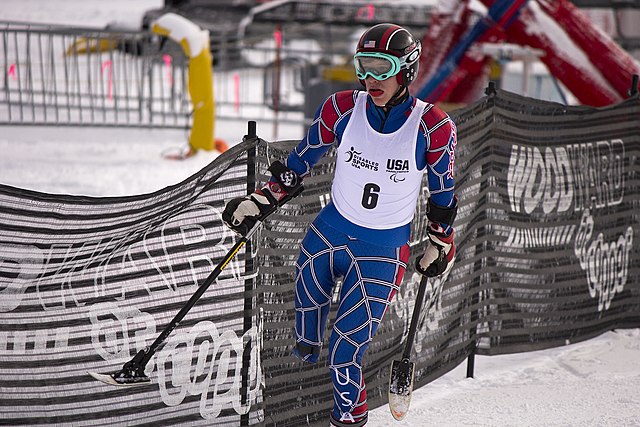LW2 (classification): Difference between revisions - Wikipedia
 Article Images
Article Images
Content deleted Content added
m Tag: Reverted |
|||
Line 27: A factoring system is used in the sport to allow different classes to compete against each other when there are too few individual competitors in one class in a competition. The factoring system works by having a number for each class based on their functional mobility or vision levels, where the results are calculated by multiplying the finish time by the factored number. The resulting number is the one used to determine the winner in events where the factor system is used.<ref name=goldman/> For the 2003/2004 para-Nordic skiing season, the percentage for the classic technique was 91% and percentage for free was 86-91%.<ref name=2005ipcworlds5/> The percentage for the 2008/2009 and 2009/2010 ski seasons was 91-93% for classic and 86-91% for the free technique.<ref name=Nordicskingpercent/> In para-Nordic skiing, the percentage for the 2012/2013 ski season was 91-93% for classic and 86-91% for free.<ref name=canadaNordic/> For para-Alpine skiers, during the 2005/2006 season, the giant slalom had a factor of 0.9184362<ref name=apc2006p2930/> and men's slalom had a factor of 1.000.<ref name=canadiacoaches5/> The factoring for LW2 alpine skiing classification during the 2011/2012 skiing season was 1 for slalom, 0.9211 for giant slalom, 0.9243 for super-G and 0.9426 for downhill.<ref name=icpasfactoring1012/> In disability skiing events, sometimes this classification is grouped with standing classes who are seeded to start after visually impaired classes and before sitting classes in the [[Slalom skiing|slalom]] and [[ For alpine events, a skier is required to have their ski poles or equivalent equipment planted in the snow in front of the starting position before the start of the race.<ref name=startorder/> During competition, the para-Alpine skier cannot use a limb not in a ski for competitive advantage to gain speed or keep balance by putting it in the snow. If they do so, they rules state they will be disqualified from the event.<ref name=ipcrules38/> | |||